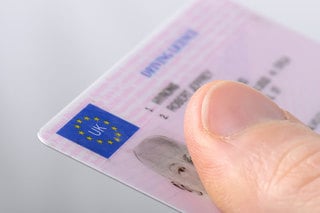Brake has praised fleets for their efforts to improve safety after Government figures revealed fewer people are being killed on Britain’s roads.
However, the road safety charity is urging more businesses to introduce initiatives that could cut the number of casualties even further.
The latest figures from the Department for Transport (DfT) estimate that 1,730 people were killed in the year ending September 2013.
It suggests a 2% drop from the 1,761 in the year ending September 2012, while the number of killed or seriously-injured (KSI) casualties fell to 23,380 – a 6% decrease when compared to the previous year.
It is estimated that up to one in three people who are killed or seriously injured are driving for work at the time, which equates to more than 11 at-work drivers being killed per week.
When compared to casualty statistics from 10 years ago, the scale of improvement is clear to see.
In 2003, nearly twice as many people were killed on Britain’s roads, with 3,508 deaths reported by the DfT. That equated to more than 22 at-work drivers being killed per week.
Laura Woods, from Brake, told Fleet News: “Every casualty on our roads is a needless, preventable tragedy, so we must aim for zero because no death or serious injury is acceptable.”
Vehicle design and technology will have played its part in reducing the number of fatalities, but Woods added: “Companies that employ drivers have an important role to play in reducing these figures further.
“Even simple measures can have a huge impact on keeping the roads safer for us all, such as educating drivers on road risks and empowering drivers to make safe choices by, for example, setting realistic scheduling and journey planning to ensure drivers have no need to break speed limits.
“Brake applauds the great work we know so many fleets are doing.”
There were drops in the number of accidents on all road types in the year ending September 2013 relative to the previous 12 months.
The number of fatal or serious accidents fell by 5% on major roads – motorways and ‘A’ roads – and 7% on minor roads
In total, there were 184,010 casualties from 138,530 separate accidents during the year to September 2013.
This represented a 6% fall for accidents and a 7% reduction for casualties compared with the previous 12 months.
Woods said: “Road crashes are violent, sudden events that tear apart families and whole communities. They are also a huge economic burden and preventable through investment in education, engineering and enforcement.
“Brake welcomes this decrease in deaths and serious injuries, and we urge the Government and all road users to continue doing what we can to reduce these figures even further.”
The data from the DfT also reveals that between July and September 2013 (the latest available quarter), 470 people were killed on Britain’s roads, unchanged from the same period for 2012.
Serious and slightly-injured casualties fell by 3% and 4% respectively, resulting in an overall decrease in casualties of 3%.
However, there were increases in the number of motorcyclist (1%) and cyclist (8%) casualties, with a 1% increase in the number of motorcyclist killed or seriously injured (KSI) casualties and a 2% increase in cyclist KSI casualties.
The DfT says it is likely that these increases were at least partly due to the different weather conditions in the third quarters of 2012 and 2013.
Rainfall between July and September 2012 was higher compared to the third quarter of 2013, potentially increasing the number of motorcyclists and cyclists on the road during this period last year.
Woods added: “We urge all fleets to find out how they could work to protect their drivers and the wider communities in which they operate by signing up to Brake’s Fleet Safety Forum, which shares and promotes best practice in fleet safety.”





















Login to comment
Comments
No comments have been made yet.